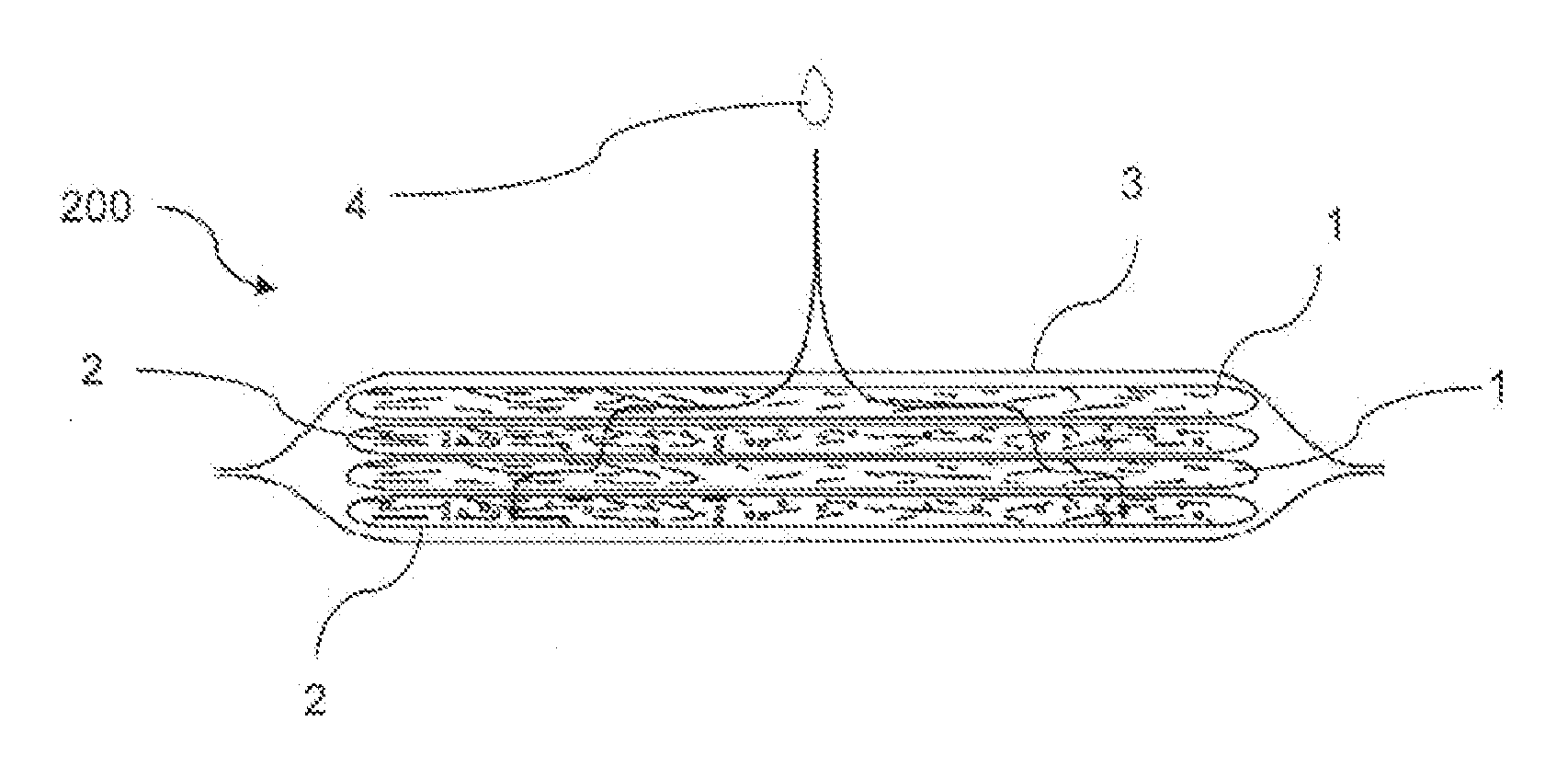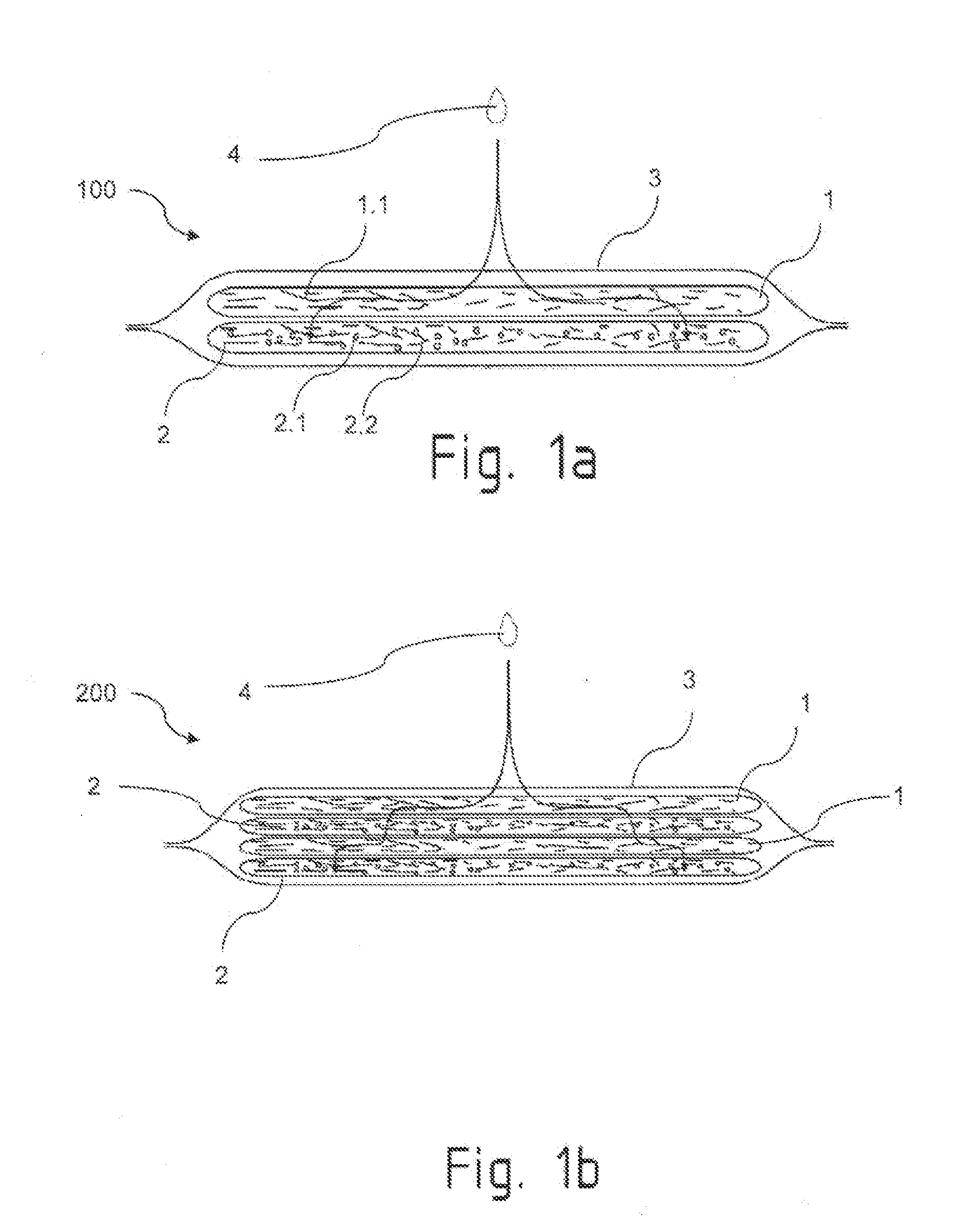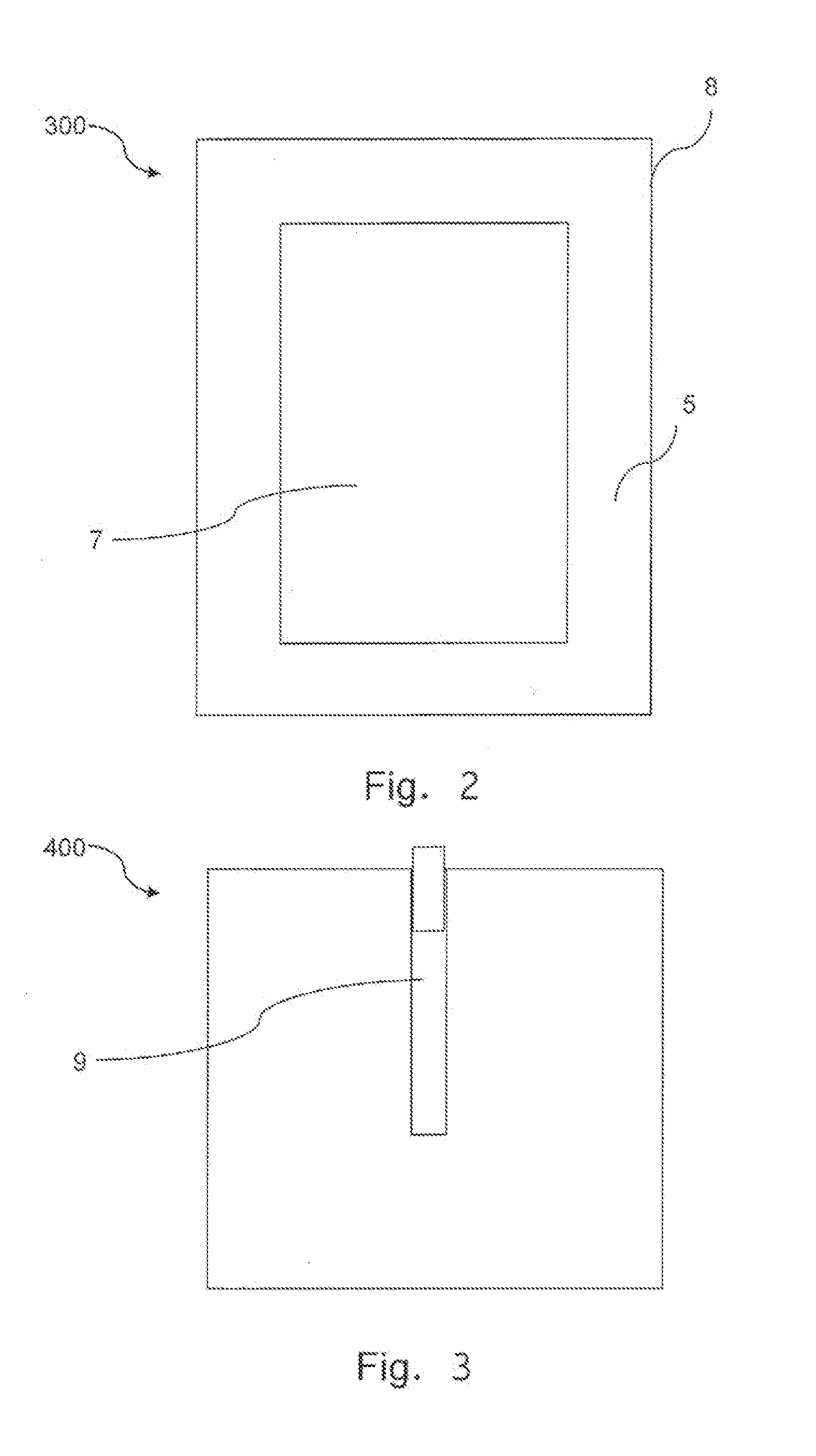Wound care article, comprising a portion of modified natural fibers or synthetic fibers
a technology of synthetic fibers and wound care articles, applied in the field of wound care articles, can solve the problems of natural fibers often losing their structural integrity, not retaining them permanently, and accelerating the growth of bacteria, and achieve the effect of high dehydrating capacity
- Summary
- Abstract
- Description
- Claims
- Application Information
AI Technical Summary
Benefits of technology
Problems solved by technology
Method used
Image
Examples
example 1
[0216]Fibrous cellulose material containing individualized, stiffened, curly cellulose fibers and a crosslinking agent, in which the crosslinking agent is selected from C2-C8 dialdehydes, C2-C8 dialdehyde acid analogs, including at least one aldehyde group, and oligomers of these dialdehydes and dialdehyde acid analogs, with the fibers mentioned above were stiffened chemically in a reaction with a 0.75% to 2.0% molar solution of the crosslinking agent mentioned above relative to a cellulose-anhydroglucose basis and have:[0217]a) an average dry fiber twist count of at least 4.5 twist nodes per millimeter,[0218]b) an average wet fiber twist count of at least about 3.0 twist nodes per millimeter and an average wet fiber twist count of at least 0.5 twist nodes less than the dry fiber twist count,[0219]c) an average isopropyl alcohol retention value of less than 30% and[0220]d) an average water retention value of 28% to 50%.
[0221]The fibers cited combine high expansion values when wetted...
example 2
[0222]The mercerized fiber is described in Table 1 with reference to its physical properties and is particularly suitable for use in a wound treatment article since it retains its dehydrating capacity even after multiple cycles in the PH mill, i e , with the fibers becoming continuously smaller and under mechanical loading.
TABLE 1PFI mill cycles05001000200040008000Dehydrating ml755767759765757730capacityDensityg / cm30.280.310.350.370.420.45Masscm3 / g3.573.282.852.692.412.23Burst kPa · m2 / g0.000.000.160.300.451.03indexDuctilityN · m / g0.61.04.17.213.619.7Breaking km0.060.100.410.731.392.01lengthBreakingmN · m2 / g2.03.25.07.310.316.6indexWhiteness%67.770.167.367.967.065.6
example 3
[0223]A modified natural fiber obtained from hardwood via a sulfate process and suitable for use in the wound treatment article according to the invention is shown in Table 2.
TABLE 2PFI mill cycles05001000200040008000Dehydratingml691668622550438253capacityDensityg / cm30.380.450.460.520.570.63Masscm3 / g2.672.232.161.931.741.58Burst indexkPa · m2 / g0.000.240.390.610.881.35DuctilityN · m / g4.69.511.917.122.130.4Breakingkm0.470.971.211.742.253.10lengthBreakingmN · m2 / g1.62.42.73.74.75.7indexWhiteness%82.381.079.979.578.777.9
[0224]Compared to the dehydrating capacity of the modified natural fiber in Table 1 with respect to the PFI cycles, the dehydrating capacity of the modified natural fiber represented in Table 2 diminishes with increasing cycles, but the degree of whiteness is about 10% higher than the values in Table 1.
PUM
| Property | Measurement | Unit |
|---|---|---|
| length | aaaaa | aaaaa |
| length | aaaaa | aaaaa |
| length | aaaaa | aaaaa |
Abstract
Description
Claims
Application Information
 Login to View More
Login to View More - R&D
- Intellectual Property
- Life Sciences
- Materials
- Tech Scout
- Unparalleled Data Quality
- Higher Quality Content
- 60% Fewer Hallucinations
Browse by: Latest US Patents, China's latest patents, Technical Efficacy Thesaurus, Application Domain, Technology Topic, Popular Technical Reports.
© 2025 PatSnap. All rights reserved.Legal|Privacy policy|Modern Slavery Act Transparency Statement|Sitemap|About US| Contact US: help@patsnap.com



